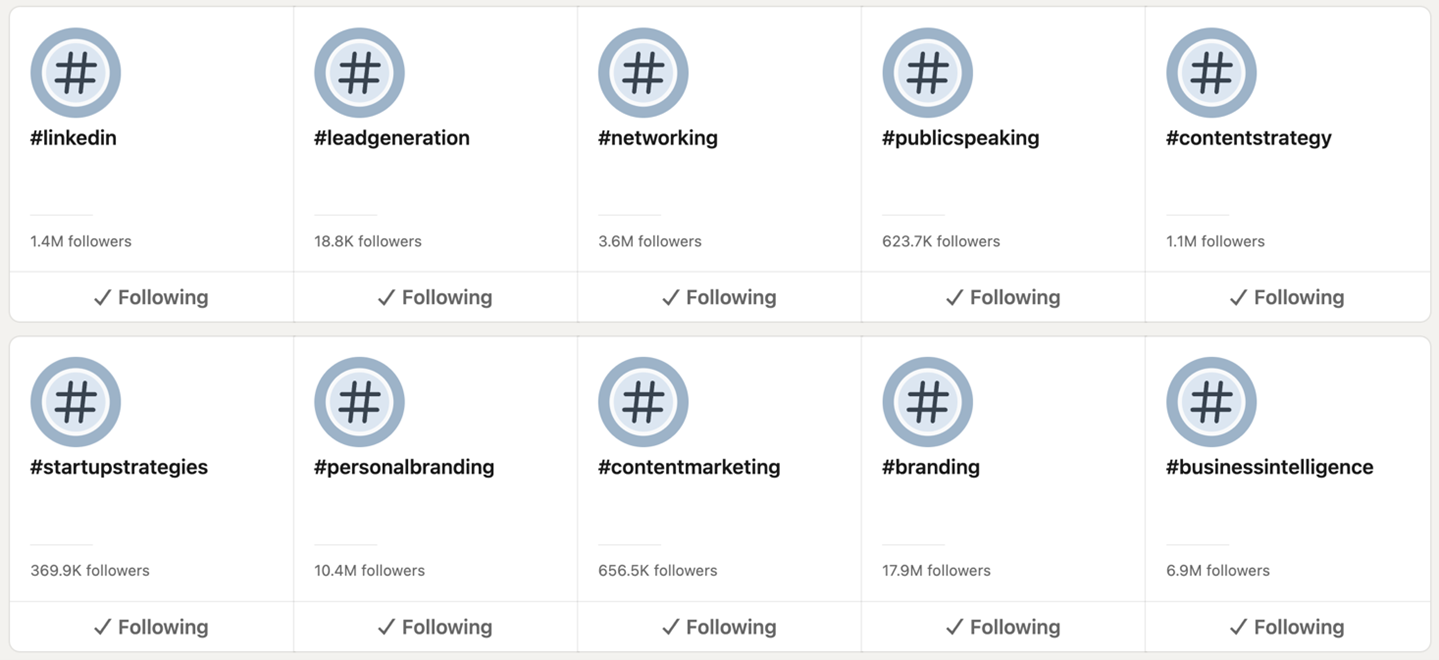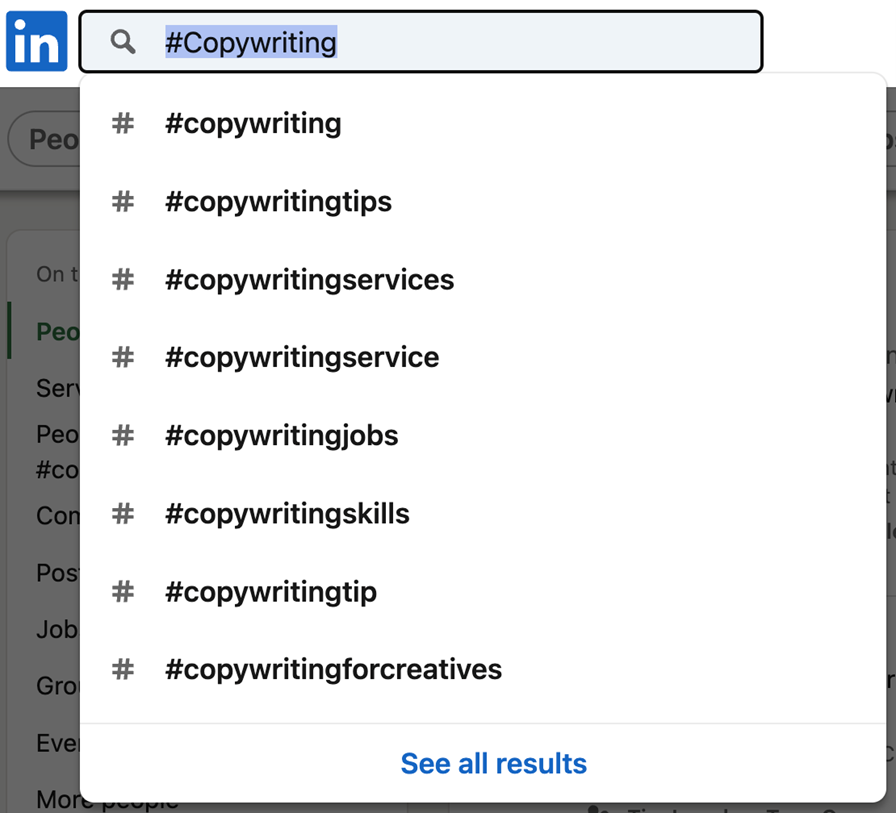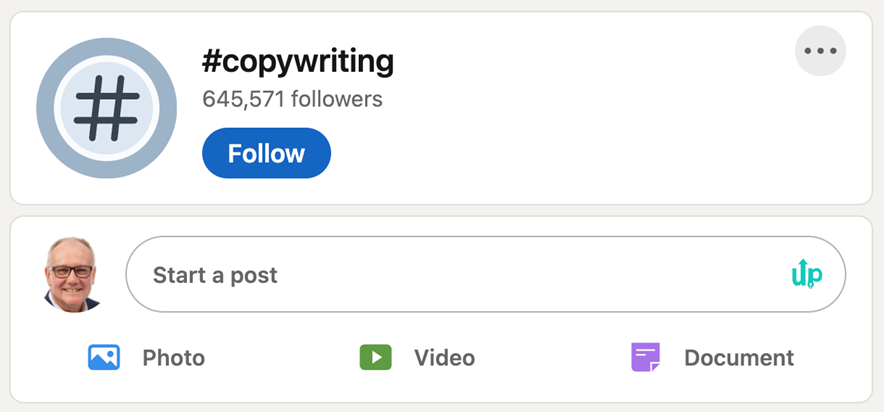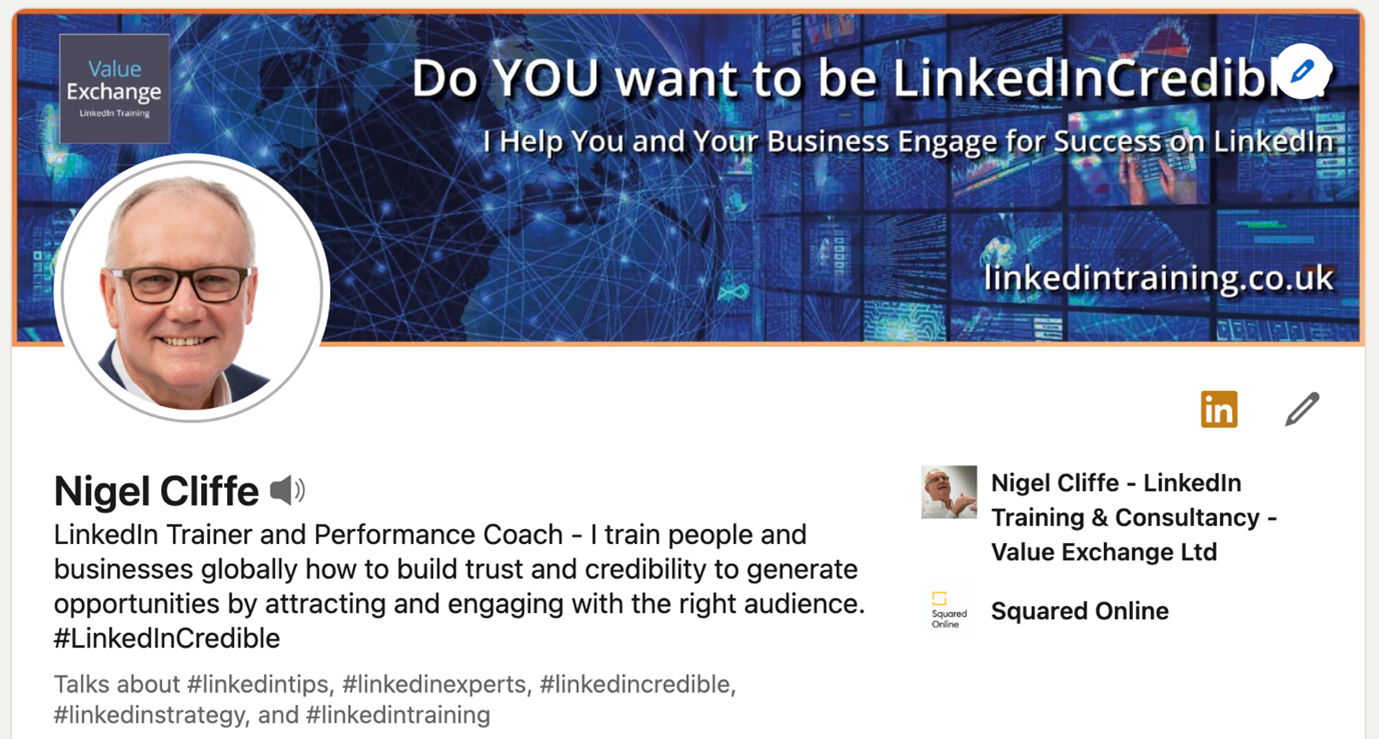Published October 28, 2020
Read Time
Updated February 21, 2023
Hashtags can be a bit baffling if you’re new to social media and if you’re trying to work out how they operate on LinkedIn.
Technically, a ‘hashtag’ is a word or phrase preceded by a hash sign (#), used on social media websites and other applications. It is often especially associated with Twitter to identify digital content on a specific topic.
But they are especially important on LinkedIn too.
In fact, since 2018 when they were introduced on the LinkedIn platform, I’d say they are becoming even more valuable and important.
Despite the fact that they can be seen all over the place, many people still ask me about them:
I see them as a way to identify your written content with a specific topic.
They let users apply a method of tagging specific words to their content that helps other users easily find messages with that theme or topic.
An obvious example for me would be #LinkedInTraining but here a few other examples:
Vet – #AnimalWelfare
IT specialist – #CloudStorage
Property developer – #Landlord
You might also consider using an event or location-based hashtag, such as #Olympics or #London to identify your content with a popular theme. Popular right now might be #Liverpool and #Eurovision for example.
Choosing top LinkedIn hashtags, such as #Management with almost 36m followers on LinkedIn could be a good thing, but on the other hand, will your content be lost in a sea of other good content competing for your attention?
By comparison, when deciding what hashtags to use on LinkedIn, #ManagementTraining with only 1,100 followers (at the time of writing) might mean your content has a higher chance of being selected to reach that target audience.
My take would be to use those hashtags which are being used by those people you are trying to attract. Mix them up with LinkedIn trending hashtags and some that are not so popular. Perhaps the use of a niche audience hashtag and a more widely used option might be a good mix. Along with your own hashtag, more of that later.
So, simply put, LinkedIn hashtags make your content more discoverable.
Firstly, DO NOT publish your hashtag in capital letters! #FAIL 🙂
The reason? Screen readers do not see the content as a word, so the screen reader separates the letters individually to the reader. Not exactly inclusive-friendly, eh?
#F A I L
Some people also consider capitalising letters as shouting at your audience.
The better way to link words together is to capitalise the leading character of each word. For example, #LinkedInTips or #LinkedInStrategy
This helps anyone who is visually impaired or has dyslexia, for example, be more able to read a hashtag. You’ll note I have done this throughout this document.
And lastly, don’t include gaps between words that you would normally include. A hashtag only works when the hashtag and the following words are linked together.
An ongoing debate exists as to the optimum number of hashtags one should use on a post. As of February,’23, LinkedIn advises that the use of three to five hashtags on a piece of content on their platform is the optimum number.
Make sure that the hashtags you use are relevant to your content. Adding hashtags just because they are popular, or trending, will damage the quality of your content and your readers will perceive this as very spammy. The quality of your content will always win out over any other attempt to gain traction with your audience.
LinkedIn uses them to identify what content you enjoy and share in.
It does this by recognising what content you engage with.
It uses the hashtags you follow to steer an increasing amount of that content towards you.
There is some evidence to suggest choosing the correct hashtags will align you with other people using the same hashtag and your content is more likely to find its way to each other’s door.
To see a list of LinkedIn hashtags you might already follow on LinkedIn, use this URL.
This will take you to the page that displays all your presently followed hashtags.

Alternatively, you can go to your LinkedIn Profile homepage, scroll to the bottom left, and there you will find a clickable link to your ‘Followed Hashtags’.
If you don’t have any followed hashtags, try searching for them in the LinkedIn search bar.

When you identify a topic you like, simply ‘Follow’ it. This will then be added to the list you now follow. The dropdown list can be quite useful too – hover over this a while and select all the ones that might be relevant to you.
In making this decision, check on the number of existing Followers the hashtag has and find the balance that I mentioned before when deciding which selection to use.
A Super-Advanced Tip – How to add Hashtags on LinkedIn Posts
Here is a tip that might be worth exploring.
Imagine that I was in the world of copywriting. Having saved the hashtag #copywriting it now looks like this:

You will see that underneath the confirmation appears the option to ‘Start a post’ based on this hashtag.
There is some evidence and logic to suggest that a post created from this method might have an enhanced likelihood of reaching that audience with a bit more strength than if you simply added it at the end of your post.
Try it for yourself to see any difference in results.
If you are not sure what hashtags to search for, think of the keywords associated with your industry or skillset.
Think of the people you are trying to attract – what LinkedIn hashtags are THEY likely to be following. Use this to start your own list of LinkedIn hashtags.
When you find content using these hashtags, see what other hashtags are also being used in content that is relevant to you. People have often already identified topics that you might also find useful to follow.
I think following around 25 LinkedIn hashtags is probably sufficient. I have a hunch that if you follow too many it may not help. Fewer might even be better.
Now when you produce content yourself on LinkedIn, be sure to add the hashtags that are relevant to that content. Remember to add no more than five.
I don’t think that where you add them is too important, but my suggestion is that they look neat at the foot of the content, or, if you are using the word in the text of your post, perhaps add it there.
I often prefer them in a single line:
#LinkedInCredible #LinkedInTraining #LinkedInStrategy
…but if the amount of text falls beyond one line of text, I might prefer to use the list option:
#LinkedInCredible
#LinkedInTraining
#LinkedInStrategy
#ContentMarketing
#LinkedInTips
Have you thought about creating your own unique hashtag?
As with all major brands, having your brand represented by a hashtag can be really valuable. Think of #nike or #apple for example. I created my own hashtag some while ago and now use it on all my posts – #LinkedInCredible This allows me the ability to search for my own content when I need it – like a mini search engine!
Be careful not to use one that is too generic. For example, #AccountancyTips may already be used by a great number of people, so your content will be seen and heard by guess who – your competitors! It won’t be distinguishable from any other use of the same hashtag.
Have a think about how you can be creative with the use of your company name or topic and give it a try.
Since March 2021 there became an option to add Creator Mode to your account.
The way to establish if someone has this option turned on is to view their profile and see if five hashtags are listed there.
I have this feature turned on, so you can see my chosen hashtags here:

This increases the importance for anyone updating their profile to Creator Mode to consider very carefully what they wish to be known and found for.
Going on to use these same hashtags in your content is understood to be a further boost to the likely reach of your content.
So, there you have it! I’d recommend giving this whole subject some thought to improve the success of your LinkedIn activity.
Hashtags really have become a vital part of maximising
your reach and value from LinkedIn.
Make sure you are maximising them to reach your audience.
On how I can help you turn your Linkedin profile into multiple opportunities in a few hours.
© Copyright 2025 Value Exchange Privacy Policy Cookies Policy Website Design by Pivotal Marketing